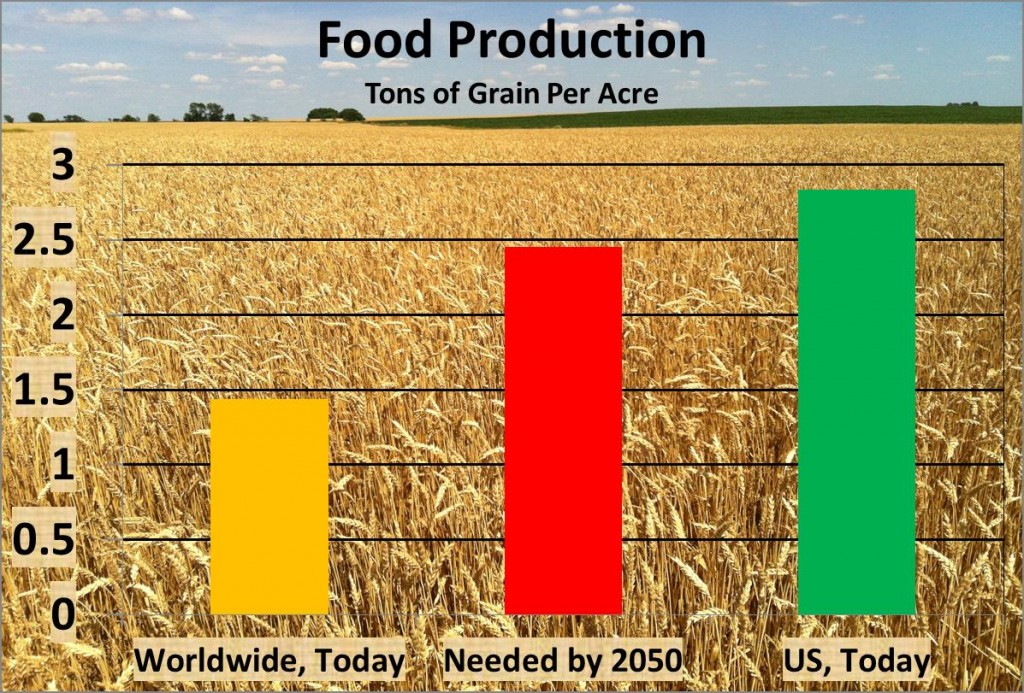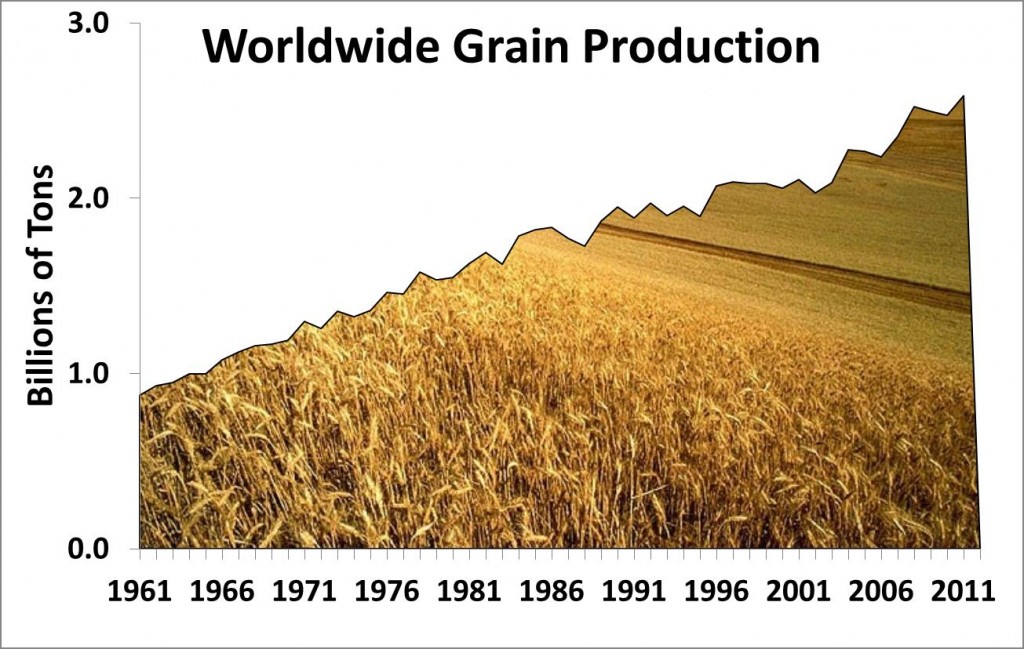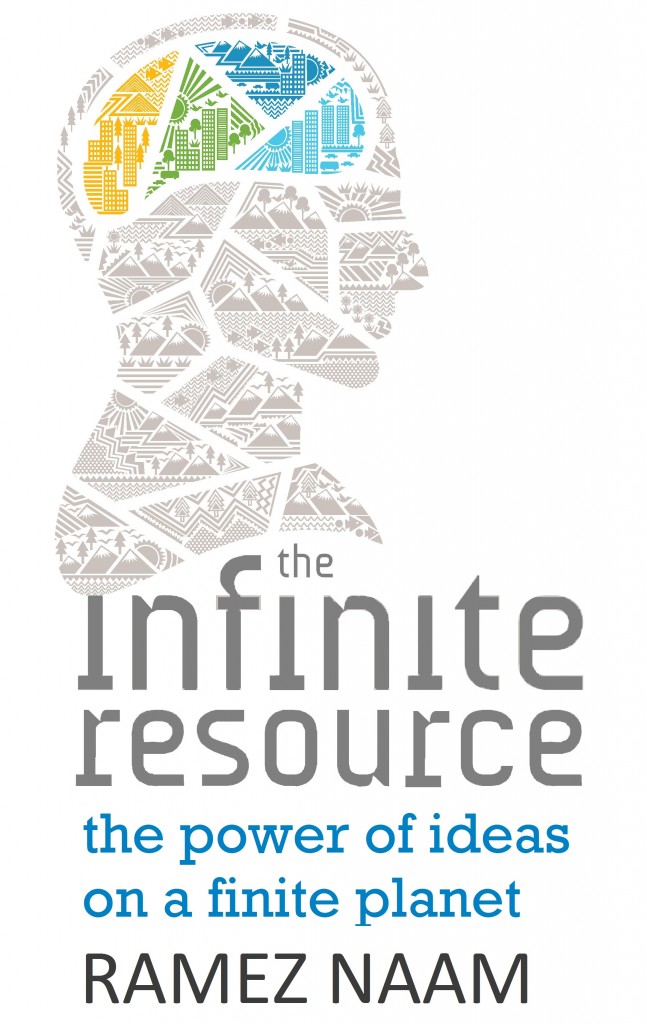Can We Feed the World?
By 2050, the FAO projects that we’ll need to increase global food production by 70% to meet rising food demand. Most of that, as Jon Foley has noted, is not from population growth, but rather from increasingly meat rich diets in the developing world.
Perhaps we can reduce that food demand growth rate, by cutting food waste or by cutting meat demand (more on that another day). But for now, I want to ask the question: Can we raise food production by 70% by 2050?
Fundamentally, it’s possible. The key evidence is that food production per acre in rich countries, like the United States, is already twice the food production per acre of the world as a whole. That means that if the world’s farms, overall, were as productive as farms in the US, we would aready be meeting the FAO’s projected food demand for 2050.
This difference, between global food production per acre and rich world food production per acre, is called the yield gap. It exists because farmers in the developing world have less access to fertilizer, irrigation, farm equipment, pesticides, and the other tools that make farmers in rich countries more productive.
Even so, total food production around the world is rising.
Jon Foley and his colleagues have found, unfortunately, that the rise is currently not fast enough to keep up with their projected demand increase of 100% by 2050 (somewhat higher than the FAO’s projection of 2050).
The key is to bend that line upwards, by closing the gap between the productivity of farms around the world and the productivity of farms in rich countries. And the key to that will be a combination of economic development and continued research and development into better crops and better farm practices.
I write more about how to feed the world, while aiming at using less land, and producing less pollution, in my book about innovating to overcome climate change, energy, water, food, population, and other challenges before us: The Infinite Resouce: The Power of Ideas on a Finite Planet



